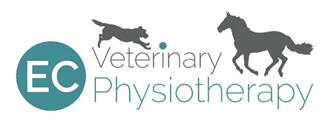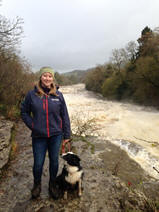|

If you are an agility enthusiast, any time of year is a good
time to review your goals for your dog and yourself. What do you want to
achieve? Do you want your dog to have tighter turns or more consistent contacts?
Do you want them to settle better in between their turns at training? Vet
physiotherapist Eloise Collins explains the art of SMART goal setting.
Goals are great!
They motivate us and when we reach them we
feel like we have really achieved something. However, we must make sure our
goals are achievable. Otherwise we can become demoralised and, even worse, our
dogs may injure themselves because we are asking them to do something which
isn't within their capability.
This is why we need to set SMART goals!
 ️
Specific ️
Specific
What exactly do you want to achieve? Who
does it apply to? Do you need help? Don't be vague and no ambiguous
language.
 ️
Measurable ️
Measurable
You must be able to objectively measure
your goal so you can track your progress. If you want tighter turns or more
speed, you could design yourself a ‘test' course to do at the start of
the year and then every quarter until the end of the year. Time yourself and
video the run for comparison.
 ️Achievable ️Achievable
It is so, so important that our goals
are achievable and realistic. If your dog is ten years old and has a little
bit of arthritis setting in, they're probably not going to be able to wrap
tightly around a wing like they used to, and it would be unfair on both of
you to ask them to do so.
 ️
Relevant ️
Relevant
Is the goal worthwhile and will it help
you achieve your fundamental aim? There's no point working on your dog's
stamina and taking them for longer and longer walks when you actually want
to be targeting their explosive power to increase their speed in the agility
ring.
 ️Time-based ️Time-based
Give yourself a time frame, whether that
be six months, a year or until the end of the competition season. A deadline
will motivate you and help you with time management.
So there we are. Good luck
with setting your goals for this year. I wish you well with them and remember to
make them SMART!

About the author...
Eloise Collins BSc(Hons) RVN, PgD Vet Phys, MNAVP is a veterinary
physiotherapist with a special interest in canine sports performance, injury
prevention and rehabilitation. She graduated from Harper Adams University with a
postgraduate diploma in Veterinary Physiotherapy. She is also a qualified
veterinary nurse, with over ten years experience working with dogs and horses.

Eloise previously
competed in agility with her Border Collies, but she is now training her young
Working Cocker Spaniel.
She runs EC Veterinary
Physiotherapy, a mobile physiotherapy service treating dogs and horses in
Hampshire, Surrey and surrounding areas.
For more information, go to
www.ECvetphysiotherapy.com
First published 6th March 2021
|